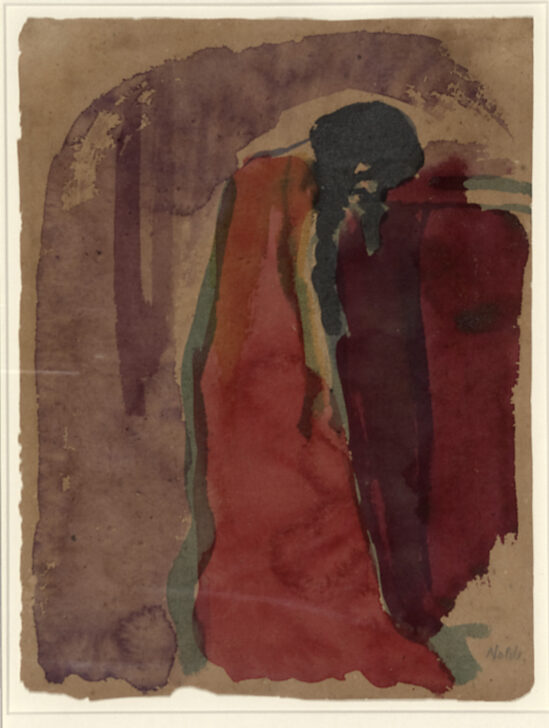Actress
Emil Nolde

Description
Emil Nolde
Germany, 1867–1956
Actress
1912
Watercolor on paper
Gift of the Ernst Pulgram and Frances McSparran Collection, 2007/2.102
Alfred Kubin
Austria, 1887–1959
Black Magic (Schwarze Magie )
1954
Pen and ink, watercolor, and gouache on paper
Gift of the Ernst Pulgram and Frances McSparran Collection, 2007/2.111
While Expressionists experimented with degrees of abstraction—and some would eventually pursue pure abstraction—their work rarely left the world of the human figure or landscape.
From 1910 to 1912, Emil Nolde wintered in Berlin and completed dozens of watercolors portraying the world of his wife, a stage actress. Applying large washes of color, Nolde would then go in and apply black lines with a dry brush to carve out human forms from the color patches. In Actress, however, Nolde leaves us with only his original layer and its suggestion of perhaps a bent head and figure, allowing us a glimpse into his working method.
Likewise, Kubin’s tribute to his friend and art critic Salomo Friedländer (1871–1946) becomes so abstract as to become difficult to describe. Yet a human figure can still be made out among the artist’s complex layerings of medium and lines.
Subject Matter:
Abstract portrait of an actress, seemingly in a moment of contemplation or stillness, with head bowed.
Physical Description:
Abstract portrait of an actress, formed by abstract pools of watercolor with only slight detailing laid in after to suggest a bowed head and curved neck.
Usage Rights:
If you are interested in using an image for a publication, please visit https://umma.umich.edu/request-image/ for more information and to fill out the online Image Rights and Reproductions Request Form.